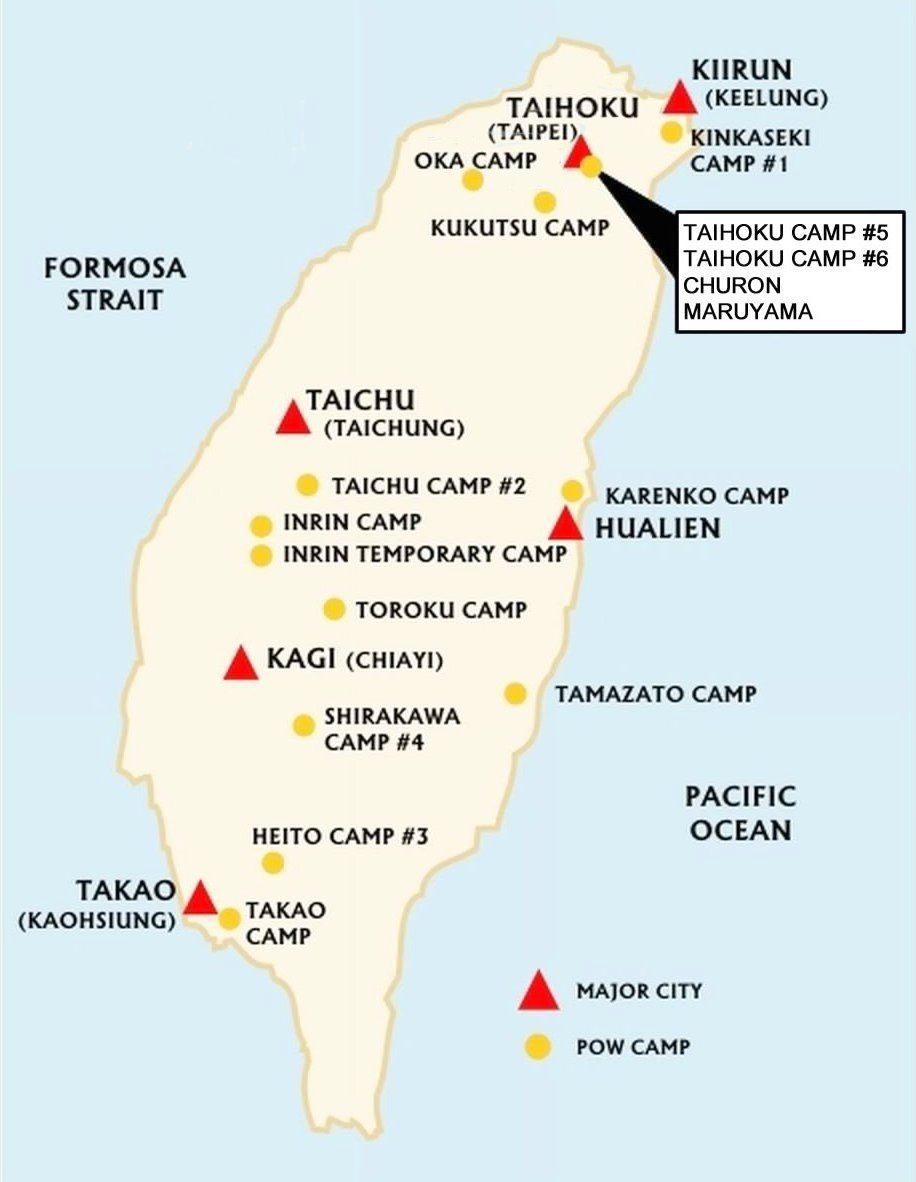

the camps
In 1942 the Japanese began bringing Allied POWs to Taiwan from various parts of Southeast Asia. These POWs were captured at the surrender of Hong Kong, Singapore, the Philippines and the Dutch East Indies. They were brought to Taiwan to work as slaves for the Japanese war effort.
The POWs suffered terribly at the hands of the Japanese in all of their 14 POW camps on the island. They never had enough food to eat and were always hungry. They had to work long hours every day and were not allowed to rest even if they were sick or injured. If they did not fulfill their quota of work each day they were beaten by the Japanese. Beatings from the guards were frequent, and medicines, although available, were held back by the Japanese, causing the deaths of many men.
Taiwan is famous for the fact that all of the highest ranking British, American, Australian and Dutch military officers from Singapore, the Philippines, and the Dutch East Indies, along with the British governors of Singapore, Malaya and Hong Kong; the Governor of Guam and the Dutch East Indies, were held on the island in camps at Karenko, Shirakawa and Taihoku. Most of these personnel were later moved to Japan and Manchuria in the fall of 1944.
Relief for the other men finally came in 1945, with the dropping of the atomic bombs and the surrender of Japan. If the atomic bombs had not been dropped and the war ended when it did, it is certain that most - if not all, of the Taiwan POWs would have died.
Kinkaseki Camp #1
Kukutsu Camp
Churon Evacuation Camp
Taichu Camp #2
Inrin Camp
Inrin Temporary Camp
Toroku Camp
Heito Camp #3
Karenko Camp
Tamazato Camp
Shirakawa Camp #4
Maruyama Evacuation Camp
Taihoku Moksak Camp #5
Taihoku Camp #6
Oka Camp
Takao Camp
Taihoku Prison
The Taiwan Hellships Memorial

Camp Key: Kinkaseki (KI) | Taichu (TC)| Heito (HT) | Shirakawa (SH) | Karenko (KA) | Tamazato (TA) | Taihoku #5 (T5) | Taihoku#6 (T6) | Kukutsu (KU) | Oka (OK) | Toroku (TO) | Inrin (IN) | Inrin Temp (IT) | Takao (TK)
© COPYRIGHT 1998 - 2025
All material on this website, including articles, maps, photographs, drawings etc. is the copyright of the
Taiwan POW Camps Memorial Society
and/or those people or organizations who have contributed such material. We are happy for material on the Taiwan POW Camps Memorial Society site to be used for schools or research purposes, provided reference is made to its source and/or the owner.
No material may be used on another website or reproduced in any manner by any other means or method without permission from the
Taiwan POW Camps Memorial Society.
All material on this website, including articles, maps, photographs, drawings etc. is the copyright of the
Taiwan POW Camps Memorial Society
and/or those people or organizations who have contributed such material. We are happy for material on the Taiwan POW Camps Memorial Society site to be used for schools or research purposes, provided reference is made to its source and/or the owner.
No material may be used on another website or reproduced in any manner by any other means or method without permission from the
Taiwan POW Camps Memorial Society.